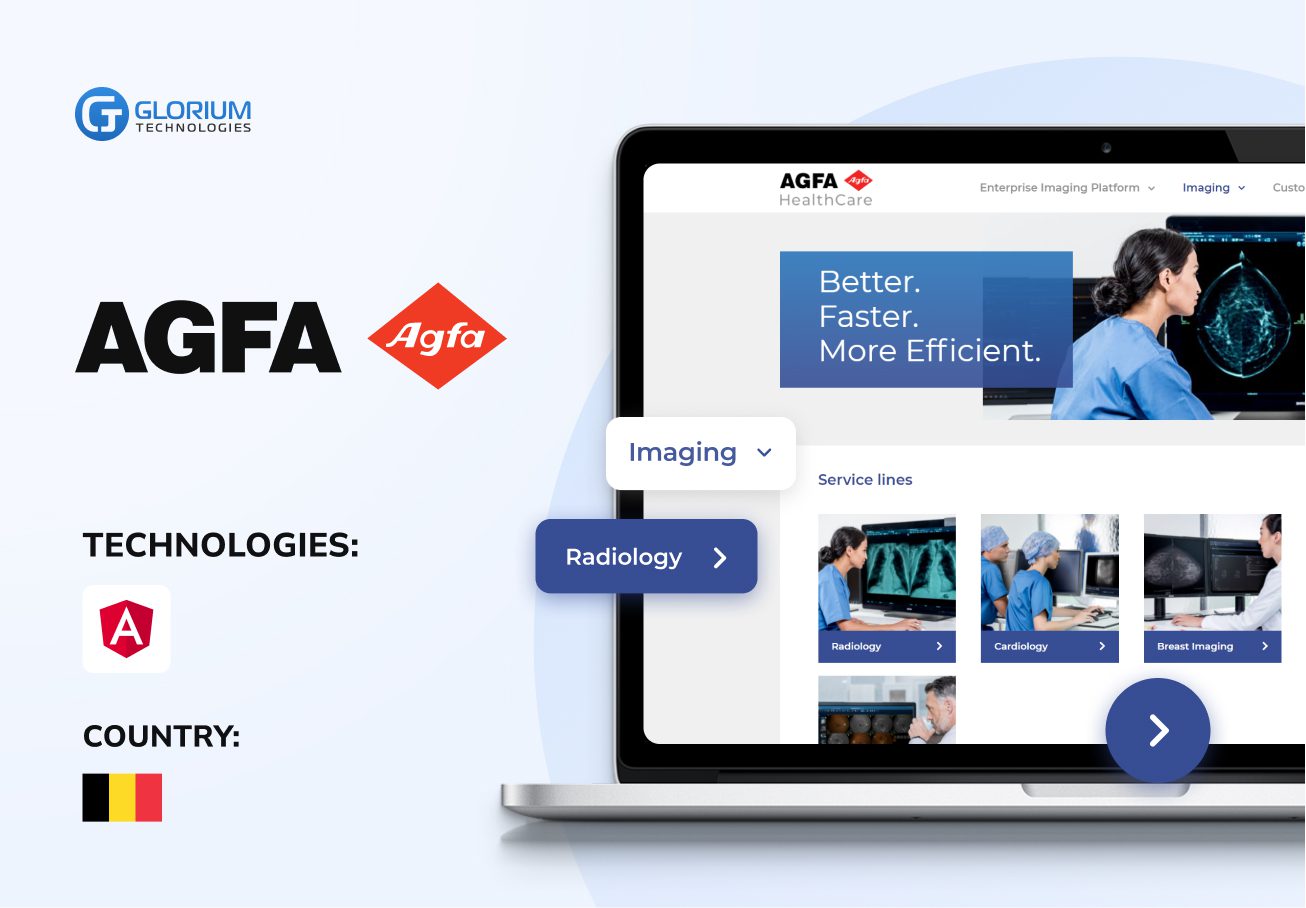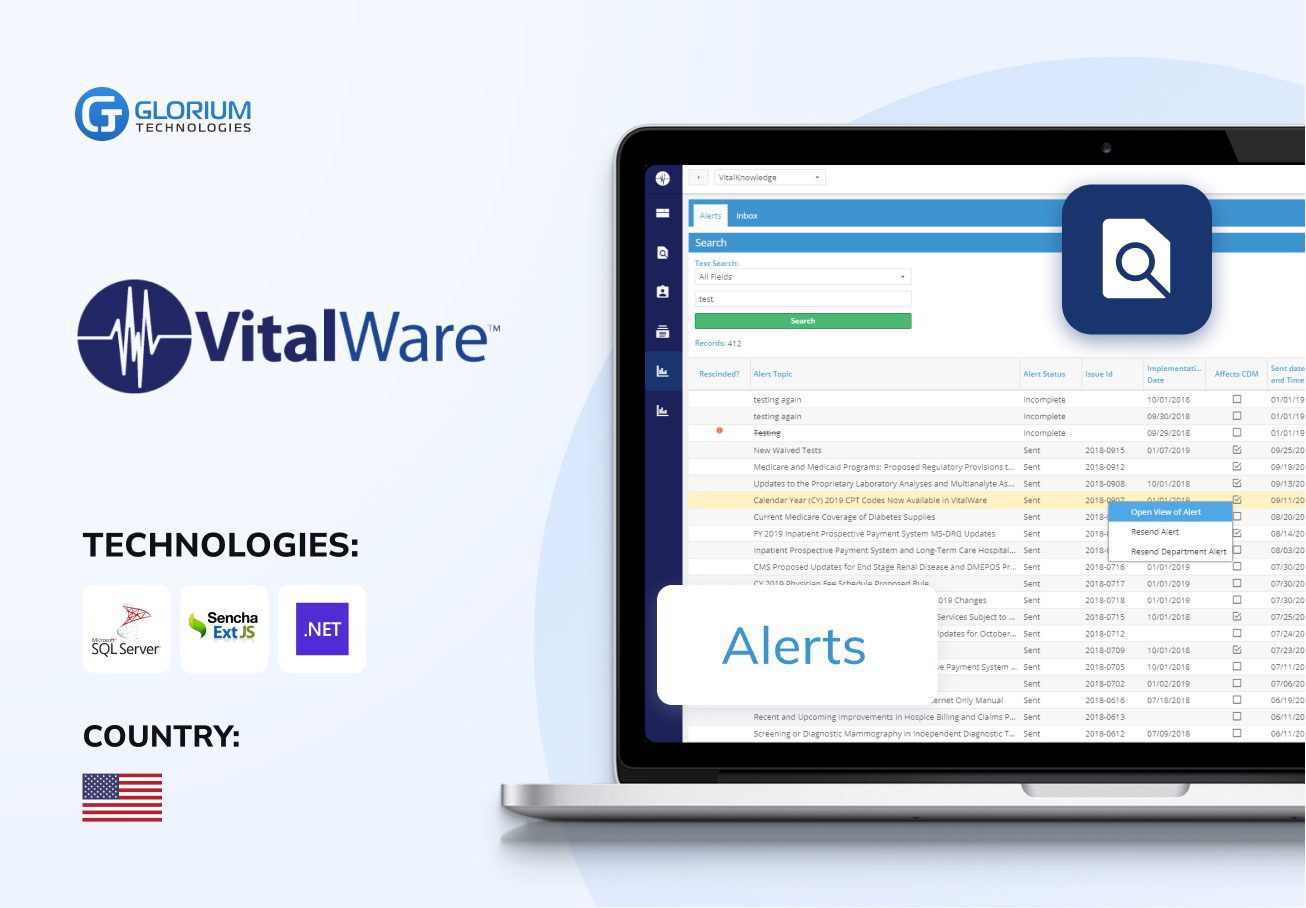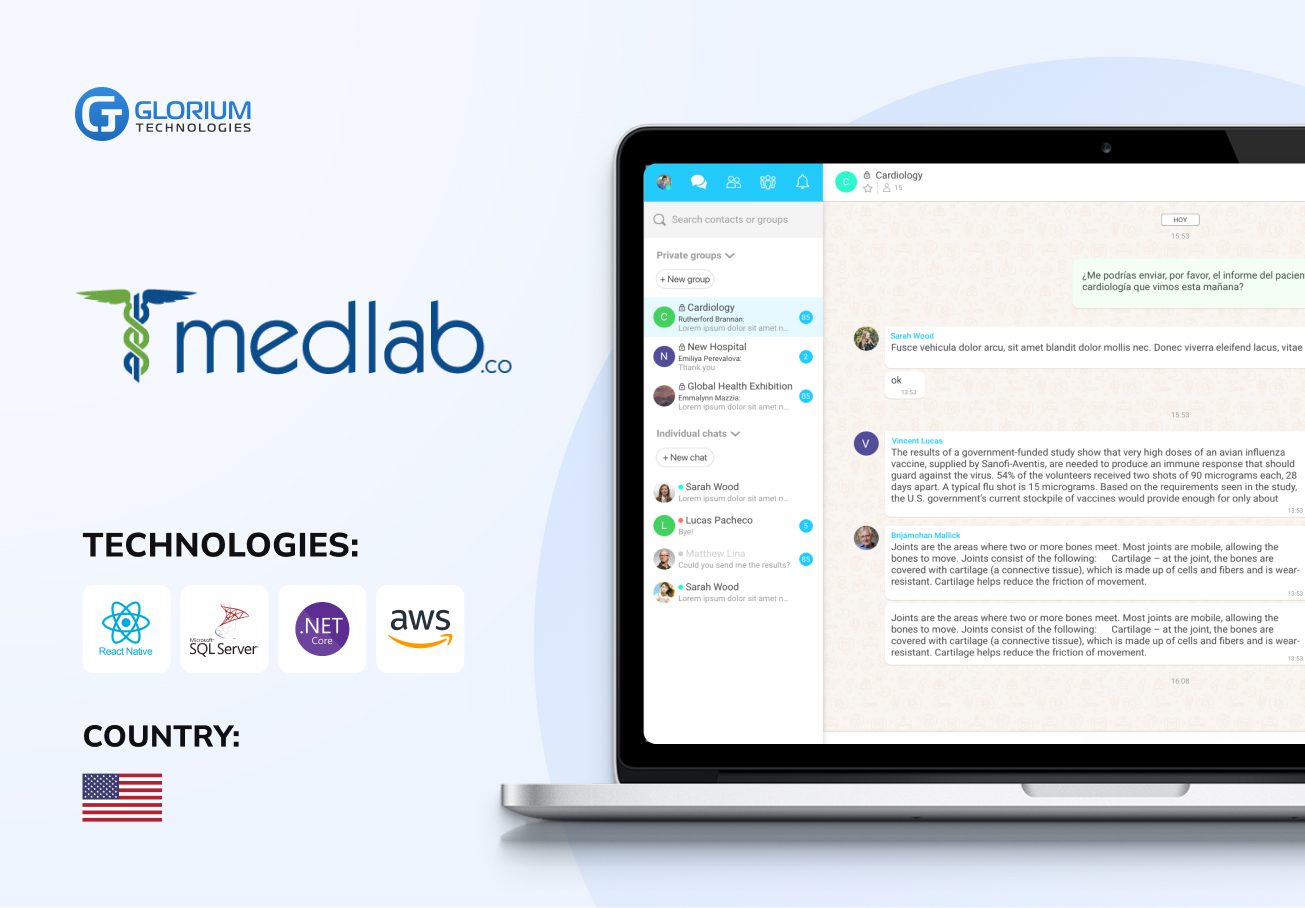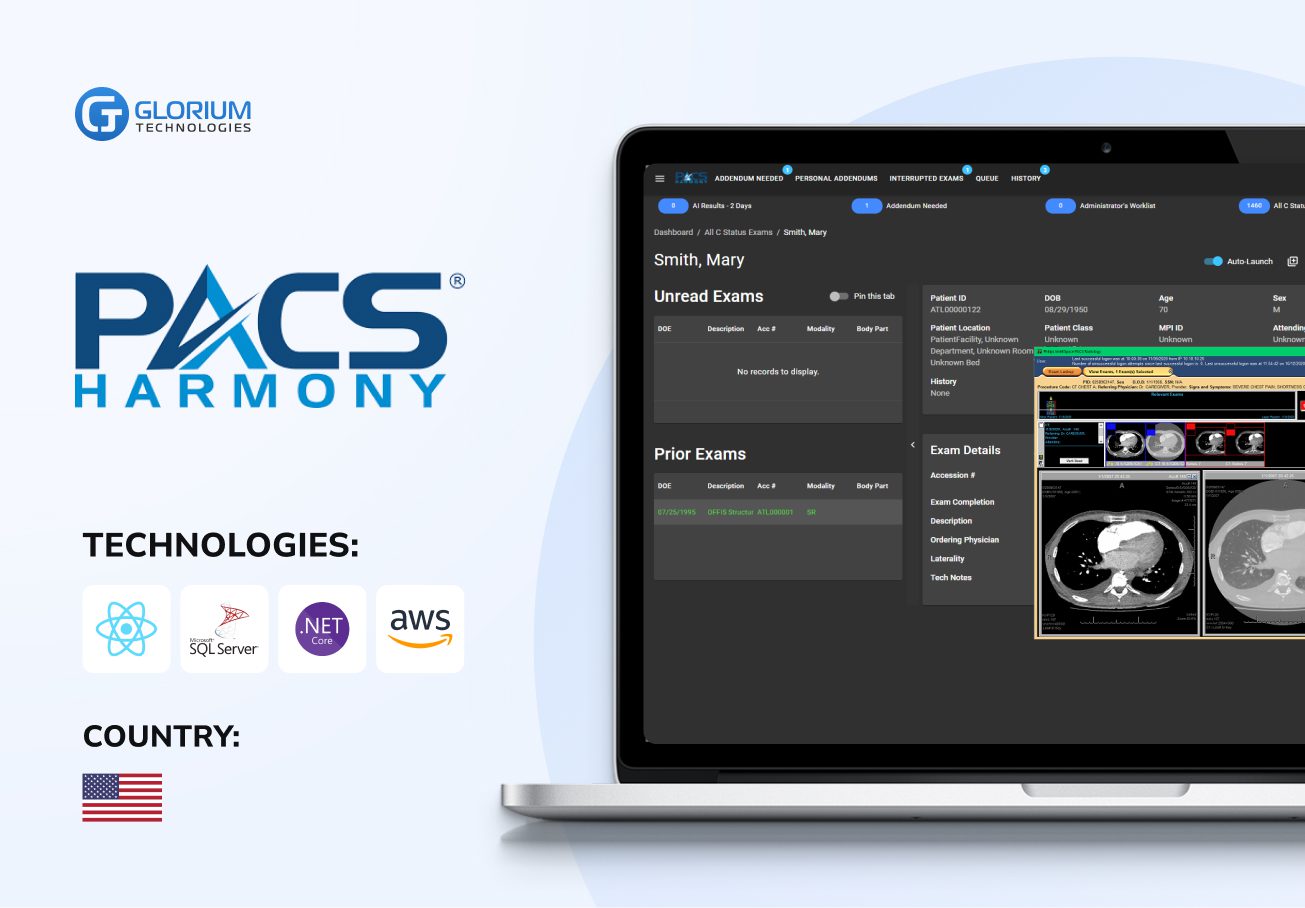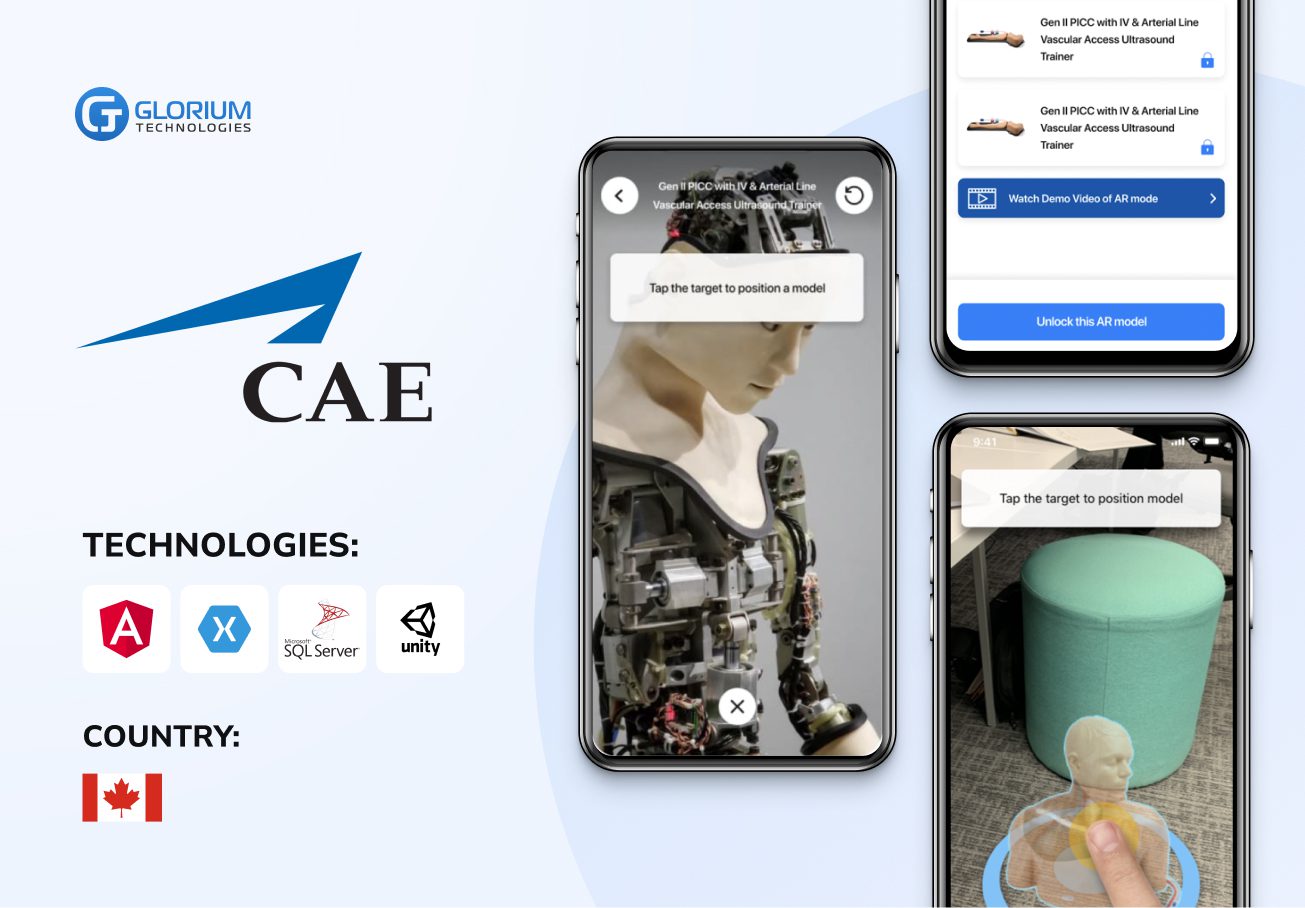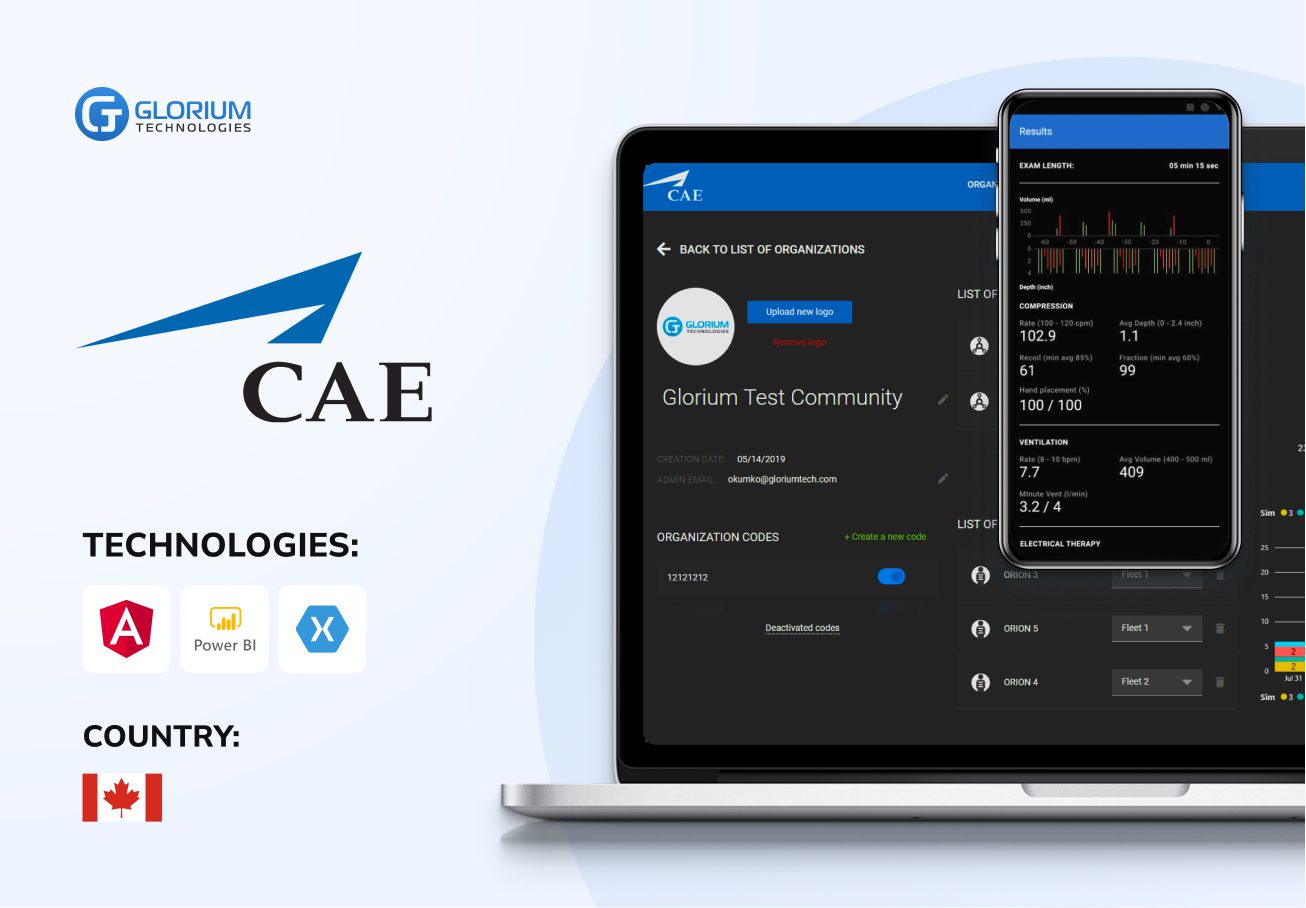Remote Patient Monitoring Software Development


You are concerned about maintaining patient confidentiality and protecting sensitive financial information from unauthorized access, data breaches, and cyberattacks.
Rest assured, our solutions address these challenges with utmost priority. We employ robust security measures, including end-to-end encryption, multi-factor authentication, and strict access controls, ensuring the safety and privacy of your patients’ personal and financial data.
You need to be updated to healthcare regulations and latest medical coding standards, reducing the risk of errors.
Partnering with Glorium Technologies guarantees the successful implementation of a compliant and efficient remote patient monitoring solution, custom-tailored to your specific needs.
You are facing challenges with integrating multiple systems and your current remote patient monitoring software.
The Glorium Technologies team specializes in seamlessly integrating your software with various Electronic Health Record (EHR) systems.
Why Custom Patient Monitoring Software Development?
Remote Patient Monitoring Systems We Develop
Our expertise enables us to develop customized systems that empower healthcare providers to remotely monitor patients’ health, engage patients in their care, and enhance overall patient outcomes.
Glorium Technologies specializes in providing closed remote patient monitoring software systems that are specifically designed and implemented for the unique needs of individual healthcare organizations or practices.
At Glorium Technologies, we offer open remote patient monitoring software systems that are designed to be interoperable and accessible across multiple healthcare organizations or practices.
Our developers have a deep expertise in building isolated remote patient monitoring software systems that operate independently and in isolation from other healthcare systems or external entities.
What Makes Us Pros in Remote Patient Monitoring Software Development?
Remote Patient Monitoring Software Types We Create
Drawing on our extensive knowledge and years of experience, we offer a broad range of remote patient monitoring solutions designed to meet the unique needs of our clients.
Glorium Technologies offers state-of-the-art RPM software that seamlessly integrates with wearable devices, including fitness trackers and smartwatches. Our advanced software enables healthcare providers to monitor and transmit vital signs and health data remotely, providing real-time insights for proactive care management.
We offer cutting-edge smartphone and tablet applications that empower patients to track and report their health metrics, including blood pressure, blood glucose levels, and medication adherence, to healthcare providers remotely. Our user-friendly and intuitive applications enable seamless communication and data sharing, facilitating remote monitoring and enhancing patient engagement.
The Glorium Technologies team builds integrated software platforms that empower healthcare providers to conduct virtual consultations, remotely monitor patient data, and engage in real-time communication with patients. Our comprehensive solutions streamline healthcare delivery, enabling seamless remote interactions, data monitoring, and secure communication channels.
Gain control over chronic disease management with Glorium Technologies’ advanced RPM software. Our tailored solution empowers patients with symptom tracking, medication management, and seamless communication with healthcare providers. By leveraging Glorium Technologies’ RPM software, healthcare organizations can enhance patient outcomes, streamline care delivery, and drive better overall healthcare management.
Glorium Technologies specializes in the development of highly efficient web-based and cloud-based software solutions designed to seamlessly collect and display patient data from diverse sources.
With our cutting-edge development services, healthcare providers can effortlessly monitor multiple patients simultaneously, leveraging comprehensive platforms that streamline data integration and analysis.
By centralizing patient data in a unified platform, healthcare providers can monitor multiple patients concurrently, facilitating a comprehensive view of their health status and enabling proactive interventions. Our RPM solutions provide personalized health information, reminders, and interactive tools that empower patients to take an active role in their health management.
We are here to help you enhance your patients’ self-care, foster informed decision-making, and promote a deeper level of patient involvement in their own healthcare journey.
Remote Patient Monitoring Software for Platforms and Devices
Glorium Technologies is a leader in delivering comprehensive solutions that enable seamless access to remote patient monitoring data, empowering healthcare organizations to provide personalized care and optimize patient outcomes.
Through our expertise, we optimize mobile apps, ensuring healthcare providers stay competitive in the digital realm while prioritizing an exceptional patient experience. Our solutions incorporate user-friendly interfaces and seamless functionalities, simplifying the retrieval and analysis of critical patient information.
Glorium Technologies is a leading provider of web systems specifically designed for remote patient monitoring. Our comprehensive solutions enable healthcare organizations to seamlessly access and manage patient information, including vital signs, health metrics, and remote monitoring data.
Automate processes such as remote patient data collection, monitoring, and analysis with our cloud-based remote patient monitoring solutions. Benefit from the scalability of our systems to effectively manage patient data, achieve financial goals, and streamline workflows for improved healthcare outcomes.
Must-have RPM Features We Build
Empower healthcare providers with Glorium Technologies’ advanced remote patient monitoring systems. Our comprehensive solutions encompass real-time data monitoring, vital signs tracking, secure data transmission, and patient engagement tools.

Our advanced systems equip healthcare providers with the ability to monitor patient data in real-time, enabling them to proactively address critical health indicators and make timely interventions.
This feature is crucial because it empowers healthcare providers to deliver prompt care, identify potential risks or deteriorations early on, and ensure optimal patient outcomes.
Vital signs are measurements of the body’s most basic functions. The four main vital signs routinely monitored by medical professionals and health care providers are body temperature, pulse rate, respiration rate and blood pressure.
With Glorium’s solutions, healthcare providers can effortlessly capture and transmit vital signs and get valuable insights into a patient’s health to ensure informed decisions and proactive care management.
Experience the convenience of customizable alerts and notifications with our RPM system, allowing healthcare providers to receive prompt notifications in case of abnormal readings or critical situations that require immediate attention.
With our solutions, you can stay vigilant and responsive, ensuring optimal patient outcomes.
We go the extra mile to ensure the utmost security and privacy of patient data during transmission. Our cutting-edge solutions feature robust encryption protocols and state-of-the-art secure data transmission mechanisms.
With our unwavering commitment to data protection regulations, you can have full confidence that your patients’ data remains safe, private, and compliant.
From medication reminders to interactive tools for self-assessment and symptom tracking, our systems encourage patients to take an active role in their healthcare journey.
With access to health education materials and personalized support, patients can make informed decisions and improve their overall well-being.
Glorium Technologies integrates collaboration tools to facilitate seamless communication and coordination among healthcare providers involved in a patient’s care. We build advanced systems that include secure messaging and video conferencing capabilities, ensuring efficient and secure communication channels.
Collaborate effectively, share vital information, and coordinate care plans, ultimately improving patient outcomes.
Glorium Technologies develops RPM systems with robust analytics capabilities. Our solutions empower healthcare providers to analyze patient data over time, identify trends, and generate comprehensive reports.
With our clear and comprehensive analytics capabilities, you can unlock new opportunities for enhanced decision-making and achieve better patient outcomes.
Glorium Technologies specializes in seamless integration with existing EHR systems, enabling efficient sharing of patient data. Our solutions ensure continuity of care by eliminating duplication of efforts and facilitating real-time data exchange.
With our expertise in healthcare IT, we empower healthcare organizations to optimize their workflows and enhance the quality of patient care.
Our Certifications
With over a decade of experience as a medical software developer, we prioritize the safety and compliance of our customized solutions delivered to clients across different locations, ensuring adherence to industry regulations at all times.
- Industry-wide standards including HIPAA, HL7&FHIR, and GDPR must be followed.
- ISO 9001 certification for Quality Management
- ISO 13485 certification for Quality Management for Medical Devices
- ISO 27001 certification for Information Security Management System.
Why Delegate Your Remote Patient Monitoring Software Development to Us?
We specialize in customizing remote patient monitoring software to fit your procedures.
Our solution follows privacy rules, verified annually to prevent liabilities.
Our scalable tech stack efficiently develops solutions to meet your needs.
You receive a full package with our integrated web and mobile application, tailored to your workflow requirements.
Research
As a healthcare software development company, we conduct meticulous examination to identify pain points and opportunities within the healthcare industry, enabling us to deliver effective remote patient monitoring solutions that address these challenges and capitalize on potential opportunities.
Crafting Solution
Following the analytics stage, our team of experts collaborates closely with clients to develop an up-to-date, effective, and user-friendly solution. We prioritize the security and compliance of the software, ensuring it meets industry regulations and safeguards sensitive data, while delivering a seamless user experience.
Prototyping
Prototyping provides an invaluable opportunity for clients and our team to test the functionality, user interface, and overall user experience of the software, enabling informed decision-making and wise investment in the subsequent full development process.
Building and Testing
Once we receive the customer’s approval on the prototype, our team promptly initiates the development and testing phase of the remote patient monitoring software tools, adhering to the highest industry standards for quality and performance.
Execution
We not only implement the software solution but also provide ongoing support to ensure that it consistently meets our clients’ evolving demands and complies with regulatory standards. Our commitment is to deliver a reliable and sustainable solution that effectively addresses the needs of our clients.
Assistance
To ensure the software’s ongoing performance and compliance with regulatory standards, we offer our clients continuous support, including training, maintenance, and upgrades. Our commitment is to provide comprehensive assistance and ensure the software continues to function seamlessly for our clients’ long-term success.
Clients Say about Us
Some Clients' Journeys
Who we are
Read moreGlorium Technologies is a full-cycle app & software development company which covers specific client business needs and manage them with the help of the best possible technology solutions.
Since 2010, we have been inventing digital breakthroughs, helping startups and businesses come out on top in their markets.

Why choose us
The Transformative Power of Remote Patient Monitoring
The healthcare industry is one of the most complex and intricate sectors, mainly because healthcare providers work with a lot of medical data and need to organize and keep them safe to provide proper care for their patients. PRM software is an innovative solution that uses medical devices to access patients’ health information in real time and enables healthcare givers to manage patients through non-traditional environments. Thus, RPM has become a means of closing the gap between the patient and the healthcare professional in the management of care.
Due to factors including an increased number of elderly people, increased rates of chronic diseases, and the necessity for better healthcare management, RPM has rapidly grown in the past few years. Grand View Research, in their report, suggests that the global RPM market was worth USD 5.2 billion in 2023. According to the current global market analysis, it is expected to grow at a rate of 7% within the years 2021-2028. This quick uptake of RPM clearly indicates the future possibilities of RPM to increase patient recovery, decrease healthcare expenditures, and increase the standard of care.
The Evolution of Patient Care through RPM Software
The implementation of RPM software in healthcare has brought about a revolution in the management of patient care. Thus, RPM applications, which allow for constant tracking and data retrieval beyond the conventional healthcare zones, have helped to extend the scope of practice for medical personnel and provide more efficient and specific interventions. This transformation from episodic to continuous care has particularly helped patients with chronic diseases since they need regular and ongoing attention.
The current generation of RPM software has added some features that include real-time notifications, graphical analysis, and predictive analysis. Such advancements have made it possible for the healthcare provider to be able to identify some of the conditions that may be developing in a patient at an early stage, modify the treatment plan to suit such conditions, and also prevent readmission of patients into the hospitals. Furthermore, the integration of RPM solutions into Electronic Health Records (EHR) has enhanced data management as it offers a wholesome approach to decision-making regarding patient health.
Remote Patient Monitoring Systems
Remote patient monitoring system form the basic structure of RPM technology that helps in capturing, transmitting, and processing the health data of the patients. Such systems include the medical devices, data communication networks, as well as databases and data warehouses for analysis.
Types of remote patient monitoring systems include:
- Wearable devices: This category includes smartwatches, fitness trackers, and other medical devices that patients can wear
- Mobile health (mHealth) apps: These are regular mobile apps that allow patients to log their symptoms and monitor their health condition
- Home health monitoring devices: With these medical devices, patients can transfer their medical data to doctors through a central hub
- Implantable devices: Improve devices such as implantable cardioverter-defibrillators (ICDs) or continuous glucose monitors that are incorporated into the patient’s body
- Telehealth platforms: These RPM solutions have video conferencing capabilities with remote monitoring features, allowing for virtual consultations and real-time data sharing between patients and doctors
Engaging Patients with Remote Patient Monitoring Platforms
The success of RPM depends on the patient’s cooperation, and this is why remote patient monitoring platforms are developed. These platforms have interfaces that are easy to use, and health monitoring tools that make the patients more involved in the management of their health.
Through real-time monitoring and feedback, personalized information about a patient’s health status, and educational material, RPM platforms encourage patients and make them feel in control of their health. Hence, the patient becomes more active in managing their health through compliance with the set treatment plans, enhanced health status, and satisfaction.
The Impact of RPM on Patient Health Data
The administration of patient health data is a vital aspect of remote health monitoring systems. These systems guarantee that information on the patient is safeguarded as well as used in a proper manner when developing the best strategies for the patient. This is where RPM comes in; through RPM, the healthcare professionals gain a better understanding of the patient’s health status and even use individualized care plans that are informed by the patient’s health data.
The Future of RPM and Patient Monitoring
Remote patient monitoring as a component of healthcare delivery changes the manner in which patients are monitored. Thus, the future of remote health monitoring systems has a bright perspective as it is expected to have enhanced features and further impact the patient’s well-being and the overall health care systems. The future of remote health monitoring system is in the further evolution of RPM technologies, offering a new age of patient care that is both competent and economical.
How Can Glorium Technologies Help?
Remote patient monitoring is a revolution in healthcare management that has a vast potential in improving patients’ conditions, increasing the capacities of healthcare organizations, and enhancing the overall effectiveness and efficiency of health systems.
RPM technologies have the potential to provide healthcare professionals with timely information concerning the state of their patients’ health, which in turn results in better patient outcomes, increased patient activation, and increased efficiency in healthcare service delivery.
If you want to become a part of this increasing implementation of these technologies, Glorium Technologies can help you create your own RPM software. With the combined decades of experience, our experienced professionals can help you build a user-centric, comfortable-to-use, and successful remote patient monitoring system.
We’re sure you’ll have a lot of questions regarding our services. That’s why we always provide free 30-minute to 1-hour consultations with our experts. Schedule your free consultation today, and we’ll make sure to answer all of your questions promptly.
How customizable are your RPM solutions to fit our specific medical practice needs?
We make sure to develop a remote patient monitoring platform that can adapt and mold to your requests and needs. We take time to study each client’s requirements, patient population, and the specific details. You can configure dashboards, notifications, and other features to match your practice’s routine and the metrics that are critical to your organization.
What type of integration capabilities does your RPM system offer with existing Electronic Health Record (EHR) systems?
Healthcare is a complex sector, and all apps that are created for healthcare organizations need to comply with regulations and be easily integrated with existing systems. That’s why We incorporate HL7, and also FHIR specifically to guarantee interoperability.
Can your RPM system handle multiple types of medical devices from different manufacturers?
Yes, all our setup is device independent. We supply a broad assortment of FDA-approved medical devices from different producers; these are blood pressure monitors, glucometers, pulse oximeters, etc. We automatically update the system to suit the new devices that come into the market from time to time.
Can your RPM handle a growing patient base?
Yes. Our RPM systems are scalable and can be hosted on the cloud, which makes it easily adjustable to the number of patients without affecting the previous level of service. No matter if you are managing a small practice and looking after 100 patients or a large practice and controlling 100,000 patients, the system will work effectively and, at the same time, be adjustable to your needs.
Do you offer a patient-facing mobile app as part of your RPM solution?
Yes, we offer accessible mobile applications for the patients. They are compatible with both the iPhone and Android operating systems, and the interface can be easily branded with your practice information.







